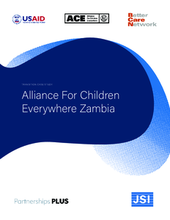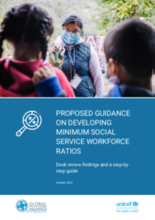The aim of this stage is to develop a robust social work framework and case management system to make sure that the process of working with and reintegrating children; from the assessment and preparation stage right through to post placement support and case closure, is safe, in children’s best interests, consistent in approach, and based upon sound social work principles and ethics.
This stage is concerned with developing a framework to support reintegration and preparing the social work team and other stakeholders for implementation.
Activities that may occur during this stage include:
- Forming a social work team. This may be internal or external to the transitioning organisation, a combination of both, or may include collaboration between government social workers and civil society employed social workers.
- Articulating a social work practice framework: Exploring beliefs, values, principles, cultural understanding, skills, theories and past experience. Where social worker’s previous practice has been rooted in institutional care or systems reliant on institutional care this is necessary to reorient social workers towards family and community services/solutions.
- Forming a multi-disciplinary team to provide oversight to the reintegration process, including local government where possible and appropriate.
- Developing or integrating Standard Operating Procedures for key aspects of reintegration including family tracing, child and family assessment, placement decision making (including interaction with gate keeping panels/mechanisms), family connection, preparing children to leave care, follow up, and case closure (these may have already been developed by government or by other experienced organizations operating within the country context).
- Developing or setting up the case management system, utilizing the national system where one exists or where one has been developed that integrates with the national information management system.
- Conducting training for staff and social workers to set clear expectations around the reintegration process, and train staff/practitioners in the SoPs, case management system that will be used and also to develop technical social work skills.
- Conducting service mapping and/or looking at the findings from previously conducted service mapping exercises to identify potential referral partners
- Developing a referral process, including standards, a referral partner vetting process and partnership agreements so that the case plan can include linking families and children to the externally run services they need
- Developing a social work supervision framework
- Setting up support services for young people leaving care/ aftercare programs
- Engaging in learning and peer exchange with other practitioners experienced in reintegration
- Assigning caseloads to social workers
- Introducing social workers to the children/young people and developing trust
- Addressing initial gaps in children’s documentation/case files
- Conducting social worker-led child wellbeing assessments
Key milestones associated with this stage are:
- Social work framework articulated
- Case management system in place
- Clear standardized operating procedures are in place
- Supervision framework in place
- Social workers/staff adequately trained
- Caseloads assigned to social workers
Resources
Displaying 1 - 8 of 8
Alliance for Children Everywhere (ACE) Zambia is a US-funded organization that transitioned from providing residential care in Zambia to pioneering family-based care, including foster care, and supporting other residential care service providers to transition. With important links to the Zambian government, ACE Zambia has been a key actor in supporting the development of policies, programs and guidelines that are now utilized across the country.
This guide is intended to inform policy makers and workforce managers in ministries of social welfare, finance and planning, and, where applicable, provincial or district authorities and other relevant national bodies responsible for the recruitment, deployment, funding or regulation of the social service workforce. The guide can also be used by a national level leadership group tasked with defining an adequate level of resourcing for social services, and, on this basis, a minimum ratio of workforce to population, alongside other steps to strengthen the social service workforce.
Miracle Foundation's Child-Centered Case Management Toolkit provides hands-on training materials to help you get children safely and permanently into families. For an in-depth understanding of our case management tools and Thrive Scale™ contact safelyhome@miraclefoundation.org.
Designed for trainers imparting life skills education to children ages 5-18.
This toolkit is designed for the social service workforce in need of basic counseling skills. It includes mini lessons that teach fundamental counseling skills and activities and worksheets to provide opportunity to practice the skills.
This toolkit is designed for parents/caregivers and the social service workforce guiding them. It provides practical tips that can be implemented quickly and mini lessons on topics of importance to anyone raising or supporting a child.
In this video, Leang Lo, from Save the Children Cambodia, shares some of his learning that informed the development of the Social Work Supervision Training Program for the member organisations of Family Care First (a network dedicated to supporting children to live in safe nurturing family-based care).
The toolkit provides the user with a comprehensive assessment framework for analyzing current systems, procedures, and practices against international standards and professional case management practices at both the case level and system level. This toolkit does not promote a specific model of case management since no one approach or model can be applied to every situation. Rather, it outlines the beneficial aspects, processes, and strategies of case management that have shown improved outcomes for children and families.




